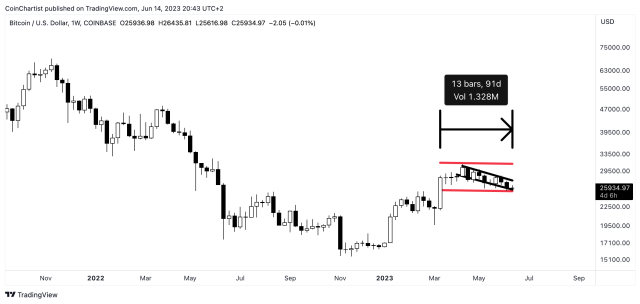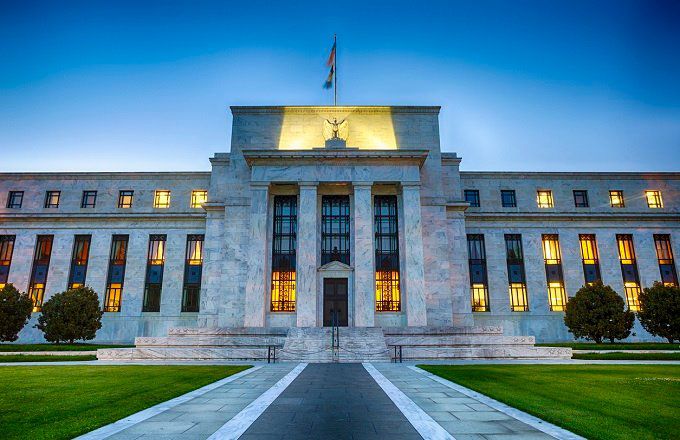
Despite the first pause in a historic series of interest rate hikes by the US Federal Reserve, Bitcoin price appears unaffected, maintaining a steady price range between $25,000 and $28,000.
Amid the market digesting the Fed’s interest rate decision, the leading cryptocurrency has so far exhibited a muted reaction to the central bank’s latest, less-hawkish move. But why?
Federal Reserve Puts Rate Hikes — And Bitcoin — On Pause
Minutes ago, the Federal Reserve, in a remarkable decision, held its key interest rate steady, temporarily halting what had been the sharpest flurry of rate hikes in four decades. While a pause was expected to provide some direction to the market, Bitcoin, currently trading at $25,800, has remained stable within its current price range.
In their fight against rampant inflation, Federal Reserve officials have hinted at the possibility of two more rate hikes later this year. This projection surpasses the expectations of many market analysts and economists.
Typically, such monetary policy adjustments by central banks have the potential to jolt global financial markets. Yet, the cryptocurrency’s muted response to the recent Federal Reserve actions remains noteworthy. Despite numerous potential catalysts for price fluctuations, the leading cryptocurrency is demonstrating a degree of price stability that belies its reputation for volatility.

Bitcoin's range tightens despite a rate pause | BTCUSD on TradingView.com
Looking Ahead At The Fed’s Fight Against Inflation And Impact On Crypto
Looking ahead, the Fed’s continued effort to combat inflation through more rate hikes could introduce further variables into the crypto market landscape. As a potential yet thus unproven hedge against inflation, Bitcoin might yet see movement that bucks the trend.
Investors and observers will be watching closely as the year unfolds. The prevailing question is whether Bitcoin will maintain its current uncharacteristic stability, or whether the anticipated Federal Reserve actions will eventually trigger a more substantial response.


















